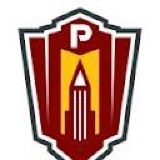Information
-
Audit Title
-
Client
-
Conducted on
-
Prepared by
-
Location
-
Personnel
1. Administration
-
1.1. OSHA Posters/OSHA 300 Form Posted (Feb 1 - April
-
1.2. Superintendents Daily Inspection Log
-
1.3. Safety Meetings Documented
-
1.4. Safety Manual Present
-
1.5. SDS Present
-
1.6 Family Board (Installed with PARIC and Subcontractor pictures)
-
Comments:
2. Medical/Emergency
-
2.1. Emergency Numbers Posted
-
2.2. Map of Medical Locations Posted
-
2.3. First Aid Kit
-
2.4. Eye Wash Station
-
2.5. Emergency Action Plan
-
Comments:
3. PPE
-
3.1. Hard Hats
-
3.2. Glasses/Goggles/Face Shields
-
3.3. Proper Clothing
-
3.4. Proper Work Boots Worn
-
3.5. Proper Hearing Protection
-
Comments:
4. Fall Protection
-
4.1. 100% Tie-Off above 6'
-
4.2. Proper Attachment Points
-
4.3. Floor/Wall Openings Covered
-
4.4. Guardrail System in place
-
4.5. Roof Edge Protected
-
Comments:
5. Electrical
-
5.1. GFCI Used
-
5.2. Cords Inspected
-
5.3. Cords Protected from Traffic and Weather Exposure
-
5.4. Lockout/Tagout Used
-
5.5. Cover & Proper Signage
-
Comments:
6. Scaffolding
-
6.1. Competent Person on Site
-
6.2. Assembled Properly
-
6.3. Inspected Daily
-
6.4. Guardrail/Bracing/Pins
-
6.5. Proper Footing and Access to Platform
-
Comments:
7. Scissor/Aerial Lifts
-
7.1. Gate/Chains Secured/100% Tie-Off
-
7.2. Guardrails Erected Properly
-
7.3. Operating on a Flat Surface
-
7.4. Safe Operating Speed
-
Comments:
8. Excavations
-
8.1. Utilities Marked
-
8.2. Properly Shored/Sloped
-
8.3. Spoil >2' from Excavation
-
8.4. Perimeter Protection
-
8.5. Proper Access/Egress (<25' Lateral Travel)
-
8.6. Inspection Completed and Documented by Competent Person
9. Fire Protection
-
9.1. Extinguisher Present, Charged, & Inspected
-
9.2. Adequate Number of Extinguishers
-
9.3. Fire Watch used where needed
-
9.4. Proper Fuel Containers Used
-
9.5. "No Smoking" in Flammable & Hazardous Storage Areas
-
Comments:
10. Ladders
-
10.1. Properly Secured
-
10.2. Proper Ladder Used
-
10.3. Used around Electrical Hazards
-
10.4. Inspected for Defects
-
10.5. Ladders Extend 3' Above Landing Surface
-
10.6. Area around Top & Bottom of Ladder free of Tripping Hazards
-
Comments:
11. Welding/Cutting
-
11.1. Oxygen/Acetylene Capped
-
11.2. Cylinders Upright and Secured
-
11.3. Flash Arrestors on Cylinders
-
11.4. Leads and Hoses free of Defects
-
11.5 Proper PPE used
-
Comments:
12. Cranes & Hoisting Equipment
-
12.1. Load Chart & Boom Angle
-
12.2. Critical Lifts Properly Planned
-
12.3. Equipment Properly Supported
-
12.4. Power Lines Inactivated, Covered, or at a Safe Distance (No Closer than 20')
-
12.5. Swing Radius of Cranes Barricaded
-
12.6. Annual Crane Inspection Verified
-
12.7. Rigging (Slings, Chains, Straps)
-
Comments:
13. Environmental
-
13.1. Asbestos, Lead, Mold, or Silica Concerns
-
13.2. Nuisance Dust and/or Noise Controls in place
-
13.3. Containers, Drums, & Tanks are properly Labeled
-
13.4. Spill Containment is adequate for Hazardous Materials
-
13.5. Any Hazardous Materials Apparent (Ignitable, Corrosive, Reactive, or Toxic)
-
Comments:
14. General
-
14.1. Housekeeping Adequate
-
14.2. Adequate Access/Egress
-
14.3. Adequate Lighting
-
14.4. Adequate Ventilation
-
14.5. Sanitary & Washing Facilities
-
14.6. Tools in proper working order/guards in place
-
14.7. Impalement Protection in place
-
14.8. Equipment Back-Up Alarms properly working
-
14.9. Seat Belts
-
Comments:
15. Site Photos
-
Add media
-
Comments
16. General Comments & Action Items
-
Add media
-
Comments
Signatures
-
On-Site Representative
-
Auditor's Signature






